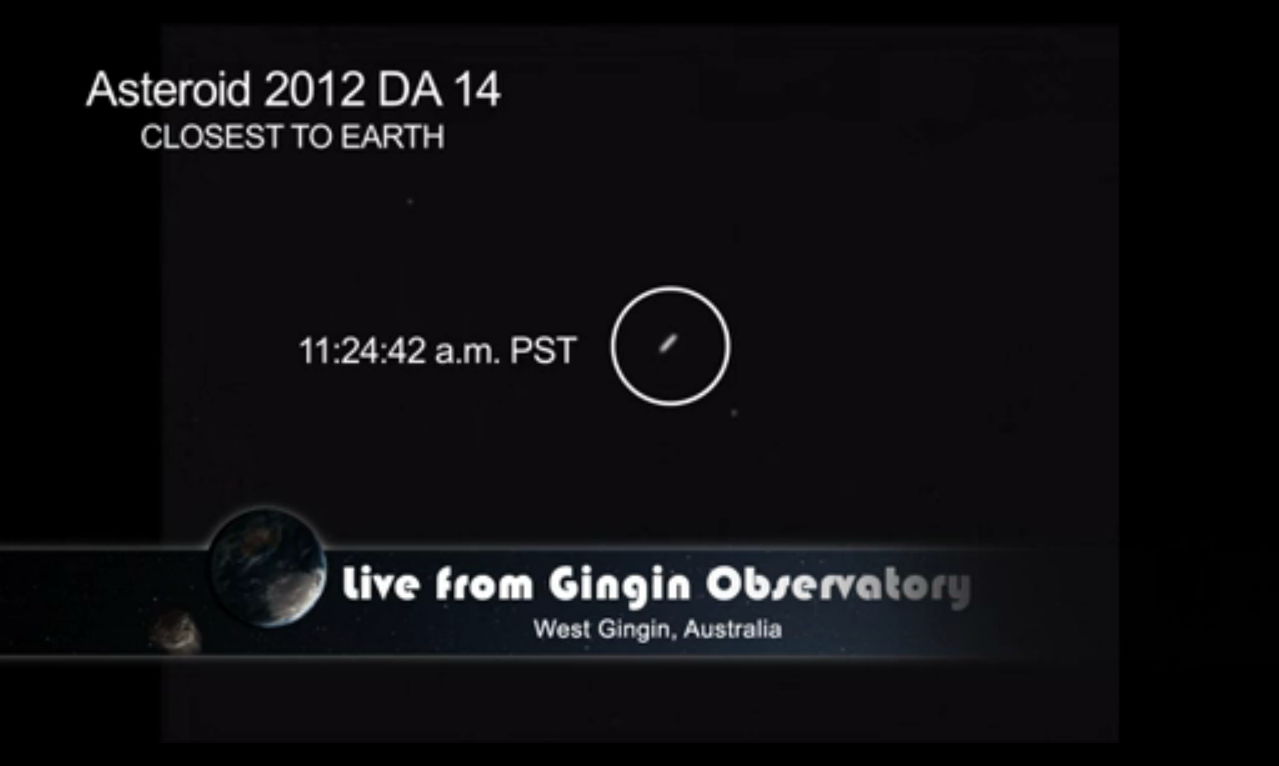
United Nations Reviewing Asteroid Impact Threat

The Russian fireball and the close flyby of the asteroid 2012 DA14 on Friday (Feb. 15) came at a moment in time when the United Nations is discussing international response to the near-Earth object impact concern.
Detailed discussions about the Russian meteor explosion and Earth's encounter with asteroid 2012 DA14 were high on the Feb. 15 agenda of Action Team-14 during the 50th session of the Scientific and Technical Subcommittee of the United Nations Committee on the Peaceful Uses of Outer Space (COPUOS), being held from Feb. 11 to 22 at the United Nations headquarters in Vienna.
The multi-year work of Action Team-14 (AT-14) is focused on pushing forward on an international response to the impact threat of asteroids and other near-Earth objects (NEOs).
Up for discussion at the Vienna gathering is the report: "Near-Earth Objects, 2011-2012, Recommendations of the Action Team on Near-Earth Objects for an International Response to the Near-Earth Object Impact Threat." [See video of the Russian meteor explosion]
Future threatening asteroids
"This event in Russia and the pass of the larger asteroid 2012 DA14 are good reminders that many thousands of objects like it pass near Earth daily," said Ray Williamson, a senior advisor to the Secure World Foundation and a participant in the Vienna gathering.
Secure World Foundation is a private operating foundation dedicated to the secure and sustainable use of space for the benefit of Earth and all its peoples.
Get the Space.com Newsletter
Breaking space news, the latest updates on rocket launches, skywatching events and more!

Williamson said that some objects will be larger and cause considerable damage if they strike Earth. Furthermore, it is critical that efforts continue to identify and track asteroids in order to counter the largest ones before they do serious damage to population centers.
"Work is continuing within the United Nations on developing international responses to future threatening asteroids. Given the uncertainties concerning where such asteroids might strike Earth and how much damage they might do, international responses will be critical," Williamson told SPACE.com.
Also taking part in the UN NEO working group is space scientist, Detlef Koschny of the European Space Agency’s European Space Research and Technology Center (ESTEC) in Noordwijk, The Netherlands.
"The day before we thought it is great timing that 2012 DA14 flies by in the evening … and were shocked when in the morning we learned about the Russia event," Koschny told SPACE.com. "What a coincidence. Was this a cosmic warning shot? It makes you think."
Timely warnings
For its part, the UN Action Team-14 has been deliberating over the years regarding the makeup and focus of an Information, Analysis and Warning Network (IAWN), designed to gather and analyze NEO data and provide timely warnings to national authorities should a potentially hazardous NEO threaten Earth.
That report and its findings are being shouldered by Sergio Camacho who chairs the Action Team on NEOs – a group that was established in 2001.
But gluing together a planetary defense strategy is not easy and includes a number of components: from finding potentially hazardous objects, predicting their future locations, and providing warning about future impacts with the Earth.

Furthermore, such a strategy also involves missions to deflect impacting asteroids by changing their orbit, as well as disaster preparedness management and, in the event of a NEO strike, shaping a mitigation and recovery plan to counteract consequences.
The need for an IAWN had been identified in the September 2008 report: "Asteroid Threats: A Call for a Global Response," a document prepared by an expert panel convened by the Association of Space Explorers (ASE) to assist the work of AT-14.
Here is an excerpt of the 2008 asteroid threat report.
Join our Space Forums to keep talking space on the latest missions, night sky and more! And if you have a news tip, correction or comment, let us know at: community@space.com.

Leonard David is an award-winning space journalist who has been reporting on space activities for more than 50 years. Currently writing as Space.com's Space Insider Columnist among his other projects, Leonard has authored numerous books on space exploration, Mars missions and more, with his latest being "Moon Rush: The New Space Race" published in 2019 by National Geographic. He also wrote "Mars: Our Future on the Red Planet" released in 2016 by National Geographic. Leonard has served as a correspondent for SpaceNews, Scientific American and Aerospace America for the AIAA. He has received many awards, including the first Ordway Award for Sustained Excellence in Spaceflight History in 2015 at the AAS Wernher von Braun Memorial Symposium. You can find out Leonard's latest project at his website and on Twitter.
